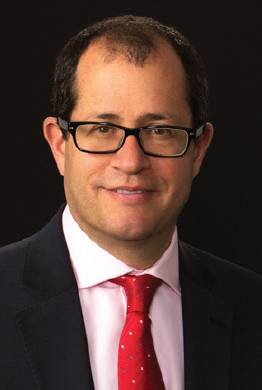Comment
Surveying the pro bono landscape
Laurence Harris discusses what the legal profession can do to support the provision and delivery of pro bono work.

About the author
Laurence Harris is a partner in Cooley (UK) LLP and a trustee of the Access to Justice Foundation (ATJF).
O nly 10 years ago, the pro bono landscape looked very different. Legal aid and public funds supported a web of free, advice-giving organisations and pro bono services and projects around the country, leaving the profession needing only to provide limited, top-up resources - either with adviser or supervisor hours - and support for particular cases. Most lawyers could make a contribution with little training. Now, things are very different in two ways.
Obviously, there is no money. Legal aid is all but gone, and public money to support free advice services is drastically curtailed. Across the country, free legal advice services are disappearing, leaving advice deserts in many areas. Less obviously, the types of pro bono help needed have also changed. The reduction of types of advice available under legal aid has been followed by a curtailment of services - and staff - in those areas of law. We can no longer rely on welfare benefits caseworkers based at a law centre to deliver social welfare advice; there are precious few paid welfare benefits advisers, but we cannot expect corporate associates from large commercial firms simply to give such advice. Housing, immigration and benefits issues require specialist support where complex legal issues abound, and significant specialist resource is required to provide training for voluntary advisers.
Ironically, these are the areas in which people are now expected to argue their own cases. As advice agencies and clinics close, even those lawyers who might be able to volunteer to provide pro bono work are struggling to find a local advice service with the resources available to accommodate and train them; yet, the advice need is increasing.
And then there is the London issue. Ninety per cent of lawyers are in London and the South East; London has the largest firms and many London firms have strong links with local pro bono providers. The London Legal Support Trust’s London Legal Walk, which is well supported by the local profession, looks set to raise over £700,000 this year. Outside London, we might as well be in a different country, with by comparison only a tiny fraction of the money and support available. London firms now setting up back-oÿce provision in regional centres will find, if they step out of their front door, that the pro bono landscape looks bleaker and harsher than the one in London.
First, cash is a dirty word, but it is a big part of the answer. The best advice providers surviving this ruthlessly Darwinian shake up of the pro bono sector need cash to develop: for technology investment and infrastructure, and innovation in service provision as well as training and development, not just to pay for welfare advisers. Automated form filling; Skype clinics; clear, written and spoken guides; and technology-driven solutions which help to drive innovation as well as manage the geographical imbalance are the way to tackle the advice deficit. CourtNav, offering remote assistance from pro bono lawyers with form filling, which the Royal Courts of Justice Advice Bureau (RCJ Advice) recently developed with Freshfields Bruckhaus Deringer LLP, is the way to go. These projects often need hard cash.
The Access to Justice Foundation (ATJF), which distributes pro bono costs and client account funds, sees outstanding applications from advice providers up and down the country. At the moment, it can only support a fraction of those projects. The sector desperately needs cash, and firms need to put hands in pockets. Some have been outstanding: for the third year running, Stewarts Law Foundation has given £100,000 to the sector through ATJF. This sort of money makes an incredible difference.
Another option would be to revisit the discussion on an entirely voluntary levy on lawyers’ practising fees. Around 50 per cent of the Bar now contribute to the Bar Pro Bono Unit via an optional donation on renewal of their practising certificate. Why cannot CILEx members be allowed to show their support in a similar way through a purely optional, modest voluntary donation?
Second, knowhow is critical. The diversity reflected in the profession is also needed in the advice sector, with lawyers at all levels and from all backgrounds needed to develop projects and provide services to clients, just as it is in business. Pro bono hours from CILEx members are just as important as from solicitors and the Bar. The use of technology and the development of new business models and ways to provide advice are key challenges. We are all innovators, and helping to support innovation in the advice sector will make a real difference.
Finally, some common sense from the government would help. In-house lawyers struggle to do pro bono as a regulated activity under the Legal Services Act 2007. The in-house sector can make a big difference, and we should tackle anything that makes it more diÿcult for them to contribute. It is time to show that we can drive change; otherwise, the government will likely force change in less palatable (and effective) ways while too many go unassisted.
- The author has written this article in a personal capacity.